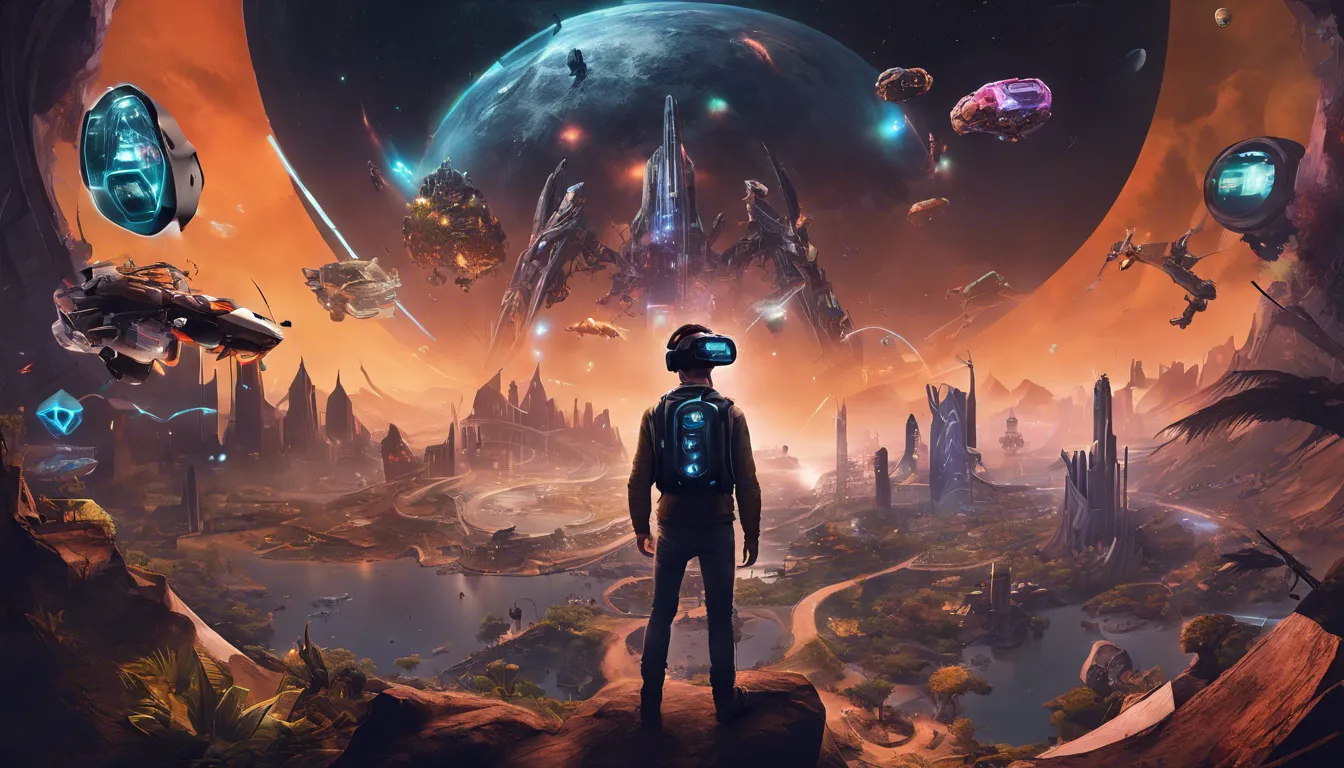Innovation is the lifeblood of the gaming industry, propelling it forward into new realms of creativity, immersion, and engagement. The landscape of gaming is continually evolving, driven by the latest technologies and trends that promise to redefine how we play and experience games. In this article, we’ll delve into the forefront of gaming innovation, exploring the latest technologies and trends shaping the future of interactive entertainment.
Real-time Ray Tracing: Real-time ray tracing has become a game-changer in the world of gaming graphics. This technology, once reserved for cinematic productions, simulates the behavior of light, creating hyper-realistic visuals with accurate reflections, shadows, and lighting effects. Games utilizing real-time ray tracing deliver an unparalleled level of visual fidelity, immersing players in breathtakingly realistic environments.
-
Virtual Reality (VR) and Augmented Reality (AR): VR and AR technologies have evolved from experimental novelties to integral components of gaming innovation. VR headsets transport players to fully immersive worlds, while AR overlays digital content onto the real world, creating a blended and interactive experience. Both technologies continue to push the boundaries of storytelling, gameplay, and player engagement.
-
Cloud Gaming and Streaming Services: Cloud gaming is redefining the way we access and play games. Services like Xbox Cloud Gaming, NVIDIA GeForce Now, and Google Stadia leverage powerful cloud infrastructure to stream games directly to players’ devices. This approach eliminates the need for high-end local hardware, paving the way for gaming on a multitude of devices with reduced latency and quick access to a vast library of titles.
-
Artificial Intelligence (AI) Enhancements: AI is revolutionizing gaming experiences by enhancing NPC (non-playable character) behavior, making in-game worlds more dynamic and responsive. AI-driven procedural content generation is creating vast, ever-changing landscapes, ensuring that no two gaming experiences are alike. AI is also being applied in adaptive difficulty settings, ensuring a tailored and challenging experience for each player.
-
Haptic Feedback and Advanced Controllers: The evolution of haptic feedback technology in controllers is enriching the sensory experience of gaming. Players can feel the impact of in-game actions through subtle vibrations and tactile sensations. Advanced controllers with adaptive triggers, touch-sensitive surfaces, and precise motion tracking are providing more nuanced control and responsiveness, further blurring the line between the virtual and physical worlds.
-
Blockchain Integration in Gaming: Blockchain technology is making waves in the gaming industry, offering solutions for secure and transparent in-game transactions, ownership of digital assets, and decentralized gaming ecosystems. Blockchain ensures that players have true ownership of in-game items, fostering unique player-driven economies and enabling cross-platform asset transfer.
-
5G Connectivity: The rollout of 5G networks is poised to revolutionize online gaming. The high-speed, low-latency nature of 5G connections enhances multiplayer experiences, reducing lag and providing faster download speeds. This technology enables seamless and responsive online gaming, opening new possibilities for multiplayer and competitive gaming.
-
Cross-platform and Cross-progression: Gaming is becoming increasingly inclusive with the rise of cross-platform play and cross-progression. Players can seamlessly switch between devices and share their progress across platforms, fostering a more connected and accessible gaming community.
Conclusion
The gaming industry is at the forefront of technological innovation, pushing boundaries and constantly redefining what is possible. The latest technologies and trends outlined here represent just a snapshot of the ongoing transformation in gaming. As these innovations continue to shape the industry, players can look forward to a future where gaming experiences are not only visually stunning and immersive but also more accessible, interconnected, and personalized than ever before. The journey into the next era of gaming has only just begun, and the possibilities are as vast as the virtual worlds waiting to be explored.
.
